The best plexiglass glue is essential for long-lasting effects, whether you're using it to fix a break in your acrylic or to construct a new project. However, gluing acrylic can occasionally be a pain, particularly if you're not sure which adhesive to use. As a result, I've included a list of the best plexiglass glue along with instructions on how to adhere acrylic or plexiglass. Continue reading!
What Is Plexiglass?
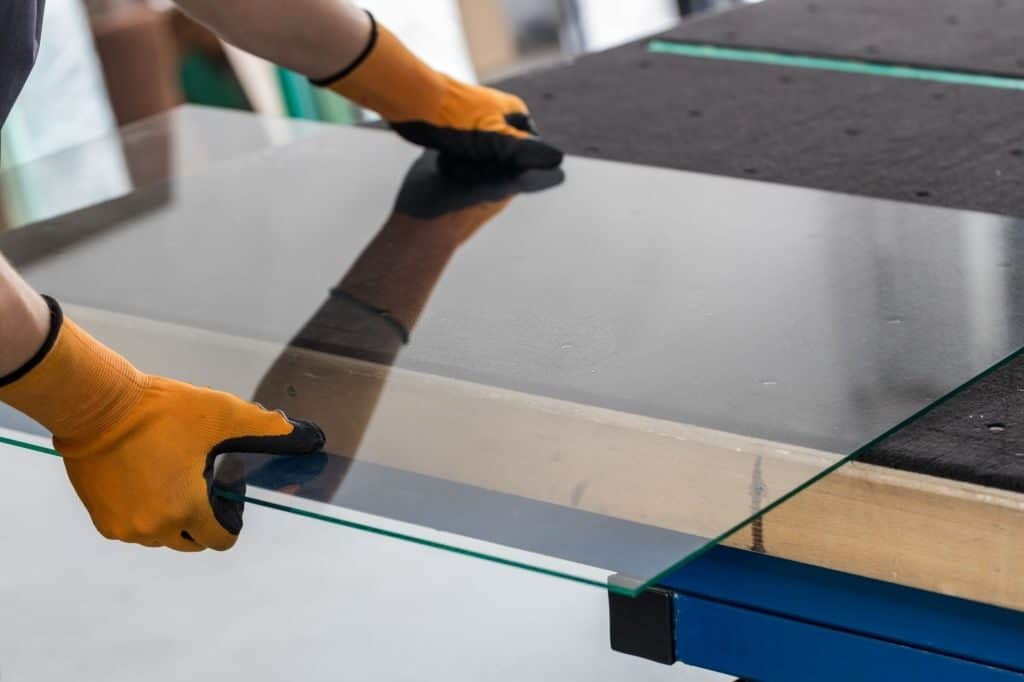
image credit: fabglassandmirror.com
Most often used in place of glass, Plexiglass, also known as acrylic glass, is a robust, transparent plastic composed of polymethyl methacrylate. It is an appropriate material for a variety of applications due to its outstanding visibility and stiff strength.
Although plexiglass's strength is a key advantage, it also enables you to bond it in a variety of sizes and shapes. Generally speaking, small to medium-sized crafts can be made with huge acrylic sheets. An acrylic sheet is also lightweight and manageable, making it simple to cut to the exact dimensions of your project.
Now that we have this information, let's examine the best plexiglass glue.
Rank | Product Image | Brand Name | Link |
|---|---|---|---|
1 | |||
2 | |||
3 | |||
4 | |||
5 |
1. J-B WELD All-Purpose RTV Silicone Sealant and Adhesive
- Clear Silicone Sealant & Adhesive: Is A General Purpose Sealant...
- Count On Us: For More Than 40 Years, Our Products Have Earned A...
- Easy To Use: Silicone Forms A Tough, Waterproof, Weather...
- Versatile & Dependable: Ideal For Automotive, Ceramic, Cloth,...
A great choice for gluing plexiglass is J-B Weld All-Purpose RTV Silicone Sealant and Adhesive, which is the best acrylic silicone available. This high-strength silicone sealant offers a long-lasting, formed-in-place silicone rubber joint sealer for plexiglass, vinyl, and glass, among other materials.
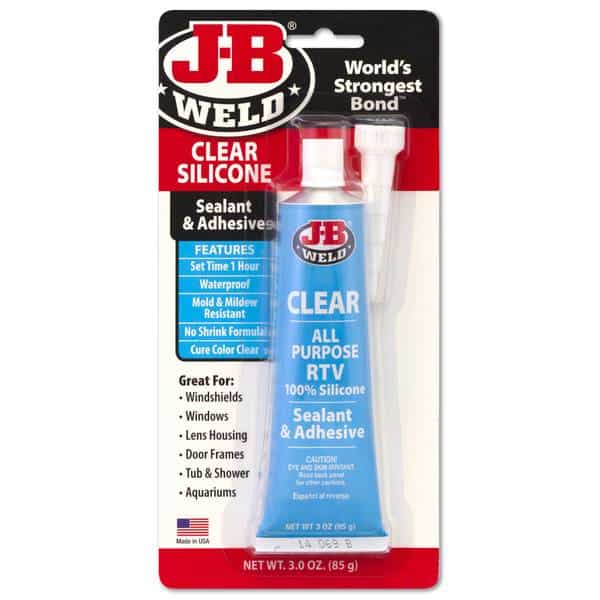
image credit: blains.com
What I like most about this product is the fact that it offers a bonding that is waterproof, weather-resistant, UV-resistant, and not pressures sensitive. Again this adhesive stays flexible once cured, making it suitable for high-stress areas and joints.
When it comes to application, this acrylic glue is applied in thick beads. This means you should use generous amounts to prevent the formation of air pockets. Remember to clean both substrates to get rid of any dirt or oil on the surfaces.
Pros:
Cons:
2. LOCTITE Professional Liquid Super Glue
- Professional-strength ingredients work fast and hold strong
- Fast-setting formula resists moisture, most chemicals and cold...
- Pinpoint nozzle allows precise application without dripping or...
- Screw-on cap cleans and seals nozzle for clog-free use
- Loctite Super Glue Professional's super strength formula is ideal...
The best superglue for plexiglass is Loctite Professional liquid glue. It provides expert strength and does a fantastic job of firmly and long-lastingly bonding various materials. The ability of this super glue to withstand moisture and the majority of chemicals is what most intrigues me.
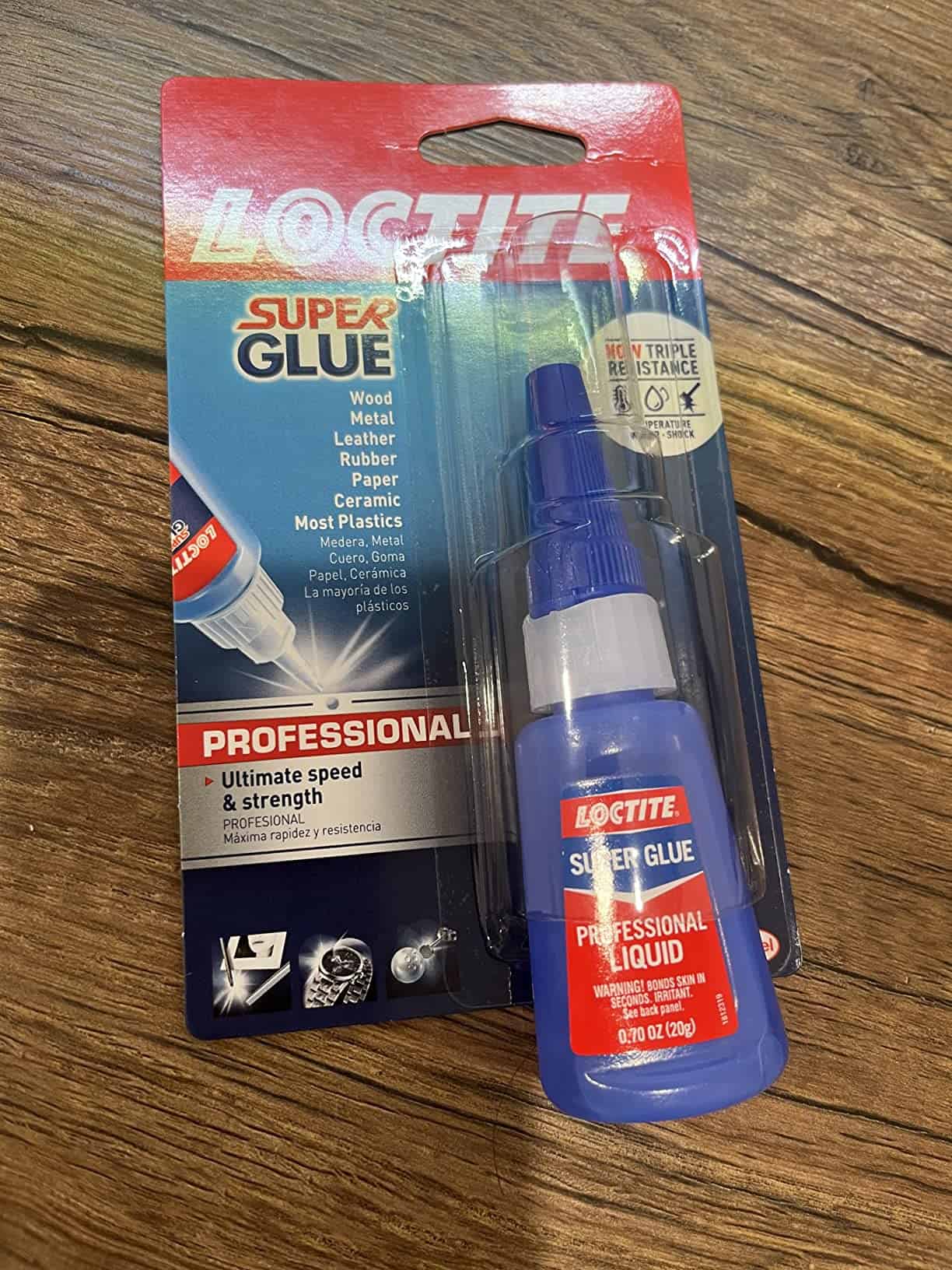
image credit: Loctite.com
This plexiglass glue comes with a pinpointed nozzle that provides precision and simplifies the application process. I also love that this best superglue for plexiglass is a highly durable adhesive that withstands high loads.
Remember, before applying the glue to our plexiglass; we first cleaned the area to be glued. We used this glue to bond plexiglass areas that will not be visible since it is hard white, which may not look attractive, especially on transparent acrylic.
Pros:
Cons:
3. ARALDITE Rapid Strong Epoxy Adhesive
- PROFESSIONAL GRADE STRENGTH: Strong, long-lasting water-resistant...
- FILL IN AND REPAIR: Cracks or scratches in snowboard skis or...
- VERSATILE CLEAR GLUE: Use in automotive applications, repair...
- SETS IN 5 MINUTES: Easy quick set 5 minute epoxy glue dries and...
- MULTI-USE APPLICATION: Effectively bonds to metal, wood,...
If you're searching for the best adhesive for plexiglass, I can also suggest Araldite Rapid Strong Epoxy Adhesive. It functions similarly to other epoxy resin adhesives by combining two ingredients—a resin and a hardener—that cause a chemical reaction.

image credit: interest.com
What even fascinates me the most is that this epoxy adhesive is not only suitable for repairing plexiglass, but it can also glue plexiglass to other materials. Again, this professional-grade product is formulated to resist water, chemicals, oil, impact, and different temperatures.
This two-component adhesive based on the epoxy resin is a suitable glue for bonding two plexiglass panes solidly together. Plus, I love that it sets clear and can be used on other materials rather than plexiglass.
Pros:
Cons:
4. SCIGRIP 16 Acrylic Cement
- Medium bodied
- fast-setting
- high strength acrylic cement
The SCIGRIP 16 Acrylic Cement is yet another excellent choice for bonding acrylic glass. I like that its high-strength acrylic cement provides outstanding adhesive alternatives for joining a variety of substrates, such as metals, thermoplastics, and acrylics.
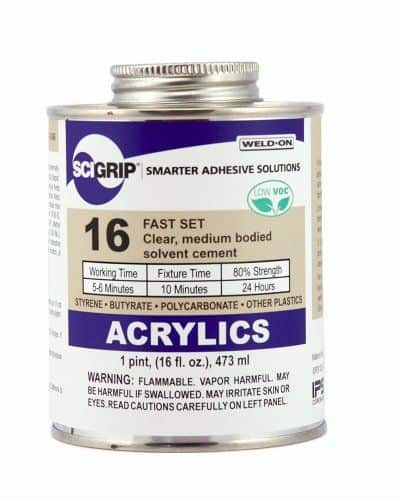
image credit: pinterest.com
SCIGRIP Cement is a strong, easy-to-use glue that you can use to glue acrylic to themselves and other materials as well. The acrylic cement dries pretty fast; therefore, you need to set your acrylic sheets correctly to avoid visibly melted plastic around the glued area.
Interestingly, this acrylic cement is designed for industrial-grade use and can be purchased online or locally in a hardware or home improvement store. Remember, during the application, you need to be in a well-ventilated area because of the cement's strong chemical smell.
Pros:
Cons:
5. Weld-on Acrylic Adhesive With Applicator Bottle
- SCIGRIP 4 is formulated as a blush-resistant cement for bonding...
- SCIGRIP 4 is formulated as a blush-resistant cement for bonding...
- SCIGRIP 4 is formulated as a blush-resistant cement for bonding...
- 2 Years Shelf Life, 1-2 Min Working Time, 3 Min Fix Time. UN...
- Used in applications like display and presentation case...
Among the best acrylic adhesives available on the market is Weld-On #4. This adhesive's unique formulation for gluing acrylic to itself is something I adore. Its water-thin nature will dry into a high-strength bond more quickly, and it is designed to prevent blushing.
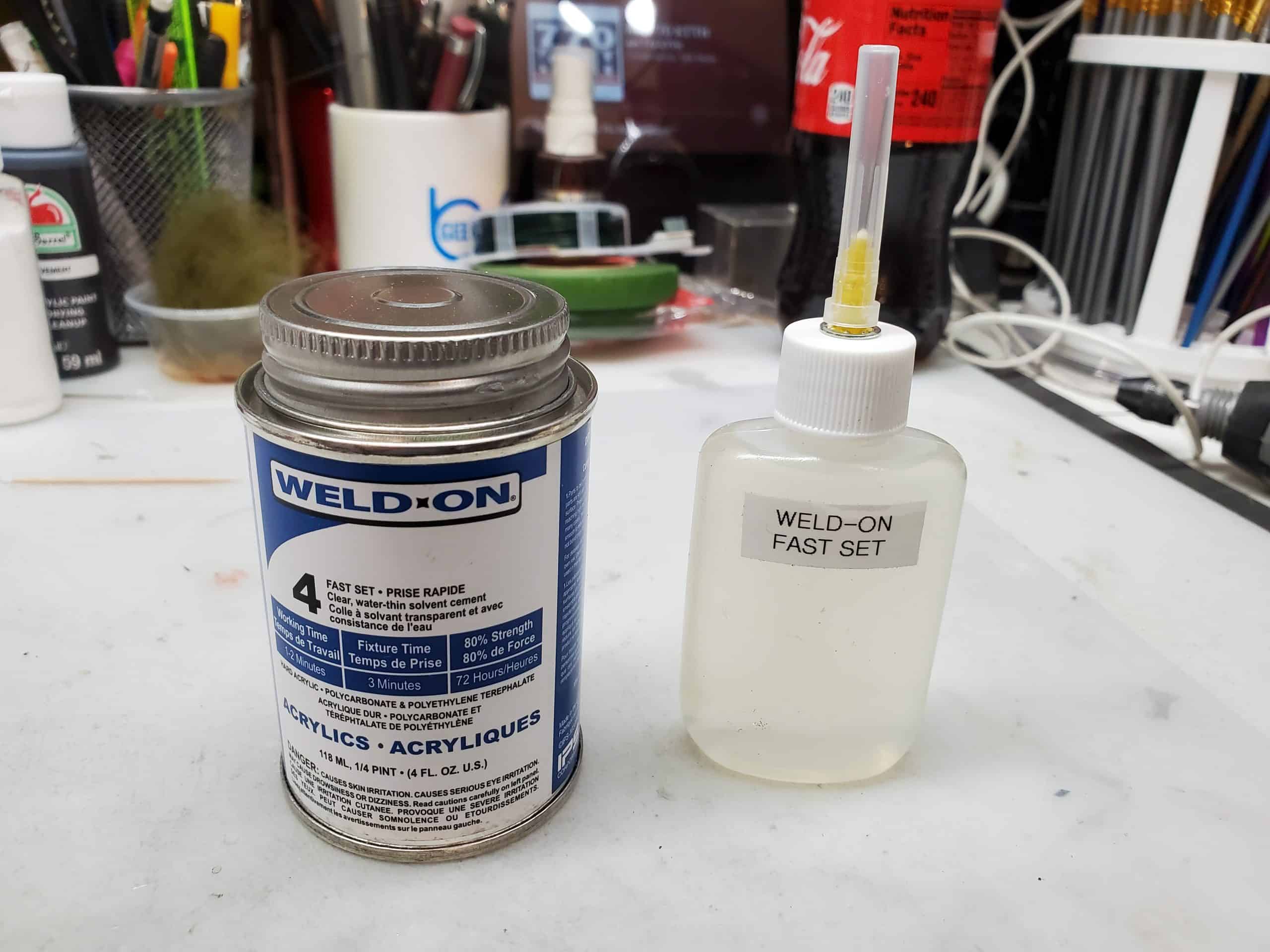
image credit: Weld-on .com
This Weld-on glue for plexiglass is ideal for bonding huge surfaces; however, it is not as good as other acrylic adhesives. I really adore this plexiglass adhesive since it can be used to repair damaged plexiglass by adhering it to it.
When properly applied, the acrylic adhesive seam will firmly keep the plexiglass panes together. As with the majority of other adhesive bonds, you must carefully clean the plexiglass before using this one.
Keep in mind that utilizing clamps or tape to hold the pieces together is required when bonding plexiglass with this adhesive; super glue application does not require this step.
Pros:
Cons:
How to Glue Plexiglass Together
Gluing plexiglass differs from gluing other materials like metal or wood. Gluing is a rather easy process if you are patient and attentive. This is the method for joining plexiglass.
1. Find a Proper Place to Work and Follow the Right Precautions
Make sure you are in an area with adequate ventilation before beginning to glue, as some glues might release fumes.

image credit: resin-expert.com
Once you have located a suitable workspace, you will need to put on protective equipment such as a facemask, safety goggles, and gloves. To prevent errors, you must also exercise caution and make sure you adhere to the directions on the acrylic cement or adhesive.
2. Cut and Clean the Plexiglass
You will need to prepare the pieces you will be working on by cutting them into suitable sizes and shapes. Acrylic glasses that are 6.3 mm or quarter inches thick can be cut using a circular saw or table saw. The pieces that are thinner than that can be scored using a utility knife.

image credit: homedepot.com
Keep in mind that acrylic glue cannot bond to materials like ordinary glue or seep into gaps, so if the cut edges are rough, sand and polish them to create a clean, flat surface on which to apply the glue.
After that, you should use water and mild soap to clean the plexiglass, paying particular attention to the edges that you plan to glue. Isopropyl alcohol is another option for surface cleaning.
3. Set the Acrylic Glass in Place for Gluing
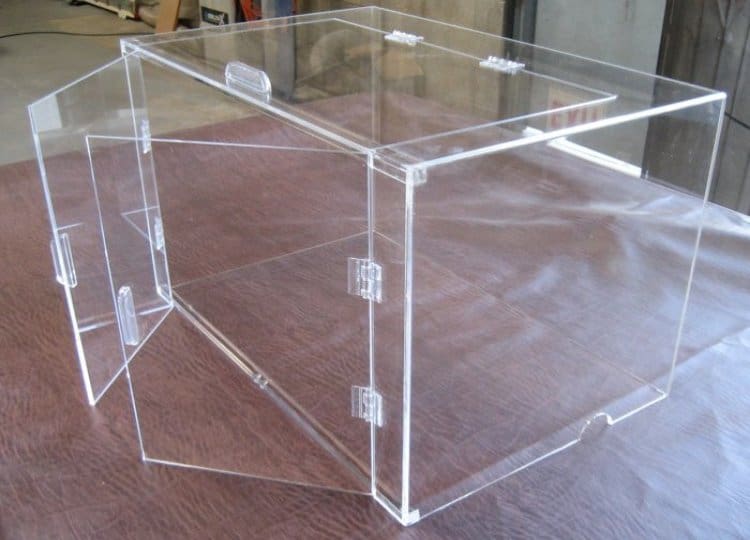
image credit: yolasite.com
To make sure the pieces fit precisely, you must arrange them in the appropriate configuration after they have completely dried. You can also use clamps or masking tape to hold the parts together so that gluing is simple.
4. Apply the Glue
After you have put the pieces together, gently use the glue using a 25-gauge syringe. You will place the syringe above the clamped pieces and squeeze the glue out along the joint lines. Ensure that you fill in any seams or gaps.

image credit: acmeplastics.com
Keep in mind that applying acrylic cement to individual pieces and then pressing them together will result in weak joints and a higher likelihood of spilling.
5. Let the Acrylic Glue Dry
Once you're satisfied, let the adhesive set for 24 to 48 hours. The clamps or tape that held the parts together can then be taken off. After that, you can remove any overlapping acrylic pieces with a router. You must take caution, though, to avoid melting the acrylic.
Factors to Consider When Purchasing the Best Glue for Plexiglass
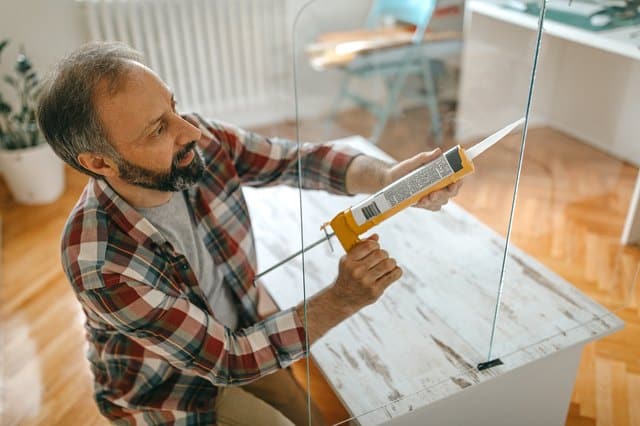
image credit: hunkercdn.com
1. Performance
Performance is yet another important consideration when looking for the best acrylic sheet glue. It's important to be sure the product you choose will work as intended and produce the expected outcomes.
The specifications of the adhesives mostly dictate their performance, therefore you must carefully review them. To find out if the adhesive works as promised, you may also read user reviews of the product you choose.
2. Material
The materials used to formulate a glue are also important in determining if it will work as desired. You will find that some materials are stronger than others which in turn affects the adhesive strength.
Even though most adhesives these days will provide a strong bond, they all have different bonding strengths, making their strength an important feature to consider. So, ensure that you purchase glue with high adhesive strength if you are looking for a more permanent solution.
Remember to get a product that is made with materials that will not cause harm to your health. Note that some of the adhesives are made with toxic materials like mercury or lead. Getting products with labels like "lead-free" or "non-toxic" is best.
On the same point, you might also want to consider if the product you purchase has any environmental impact. For instance, if the glue is made with recycled materials, it is more likely to be environmentally friendly.
3. Temperature
Adhesives' functionality and shelf life can be impacted by environmental factors. Long-term exposure to higher temperatures will cause some adhesives to perform noticeably worse. As a result, you should think about buying glue with the highest operating temperature possible. The ideal plexiglass glue is one that is resistant to cold, water, and weather.
4. User-friendliness
When purchasing the best glue for acrylic, it is necessary to pick a product that is easy to use. You need to understand how the glue you settle for works fully. If too many steps are involved or the steps are too complicated, then you can find another one that is easier to use and understand.
5. Price
Always examine a product's price before making a purchase. The same things will be sold at varying prices in different stores. It's crucial to compare prices from several retailers in order to avoid paying more for a goods.
Frequently Asked Questions on Gluing Plexiglass
1. Is hot glue suitable for plastic?
For a variety of materials, including plastics, hot and melted glue works flawlessly. It offers a strong and enduring connection. The best thing about it is that it works with a variety of plastics as well as wood and tile. Nevertheless, you should exercise extreme caution when working with hot or melted glue to prevent drilling and surface damage.
2. Can superglue be used on plexiglass?
Yes, plexiglass can be bonded with superglue. But it's important to remember that it works best when applied to invisible regions. This is because it creates an unsightly white seal on a transparent plexiglass pane when it dries.
Image credit: acmeplastics.com
















